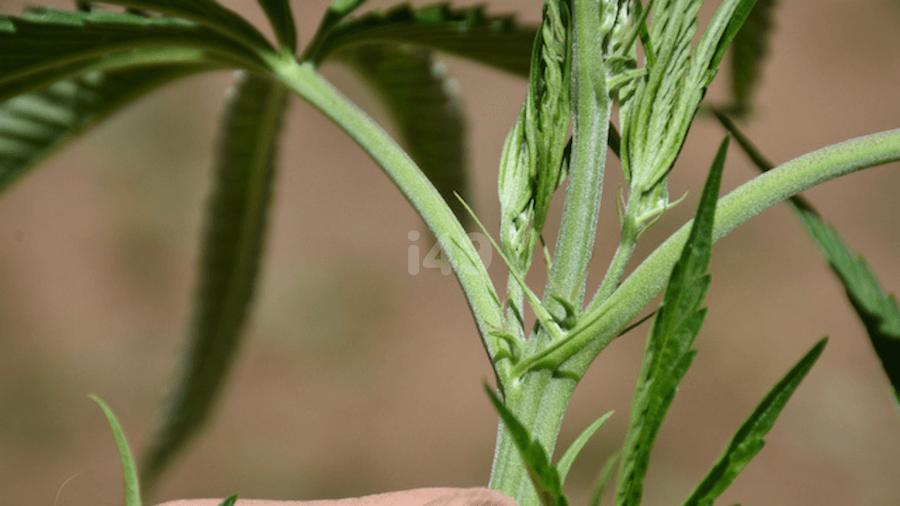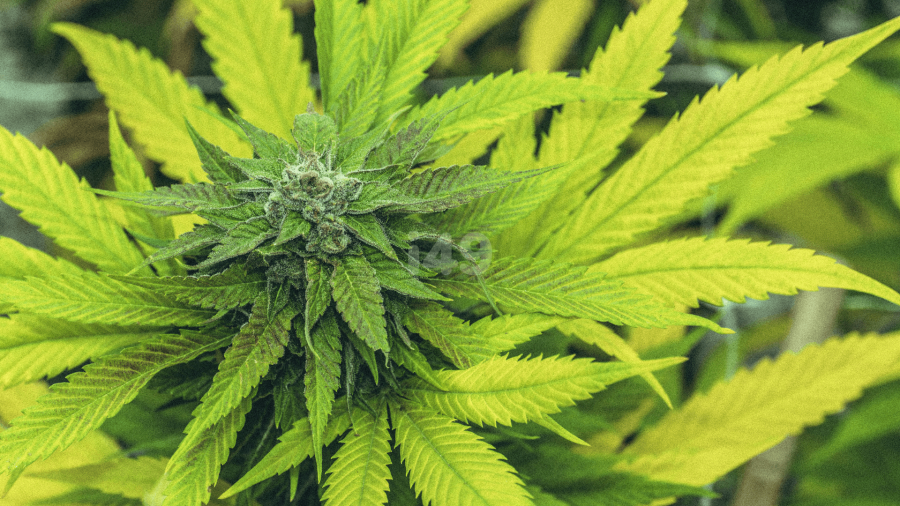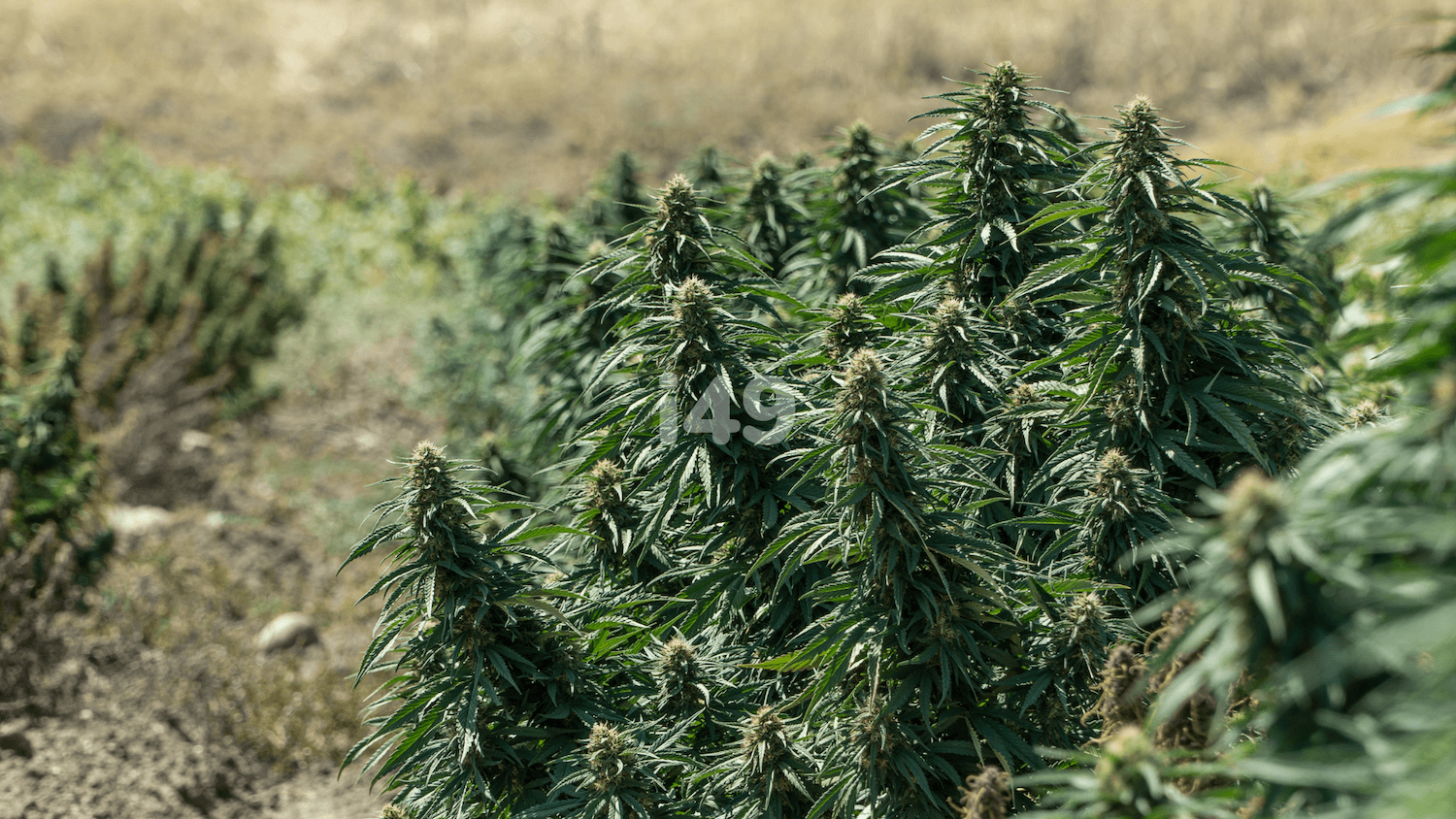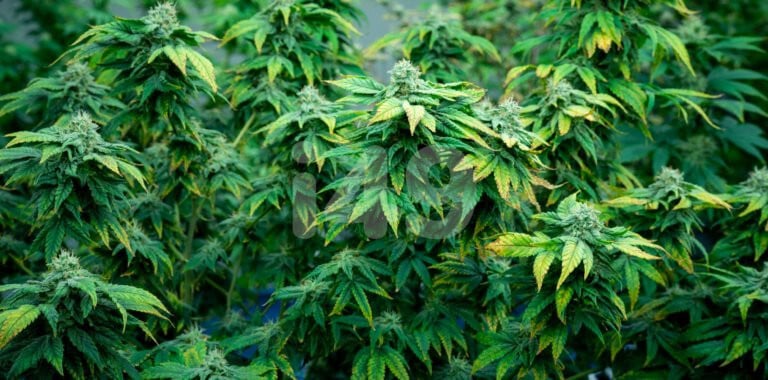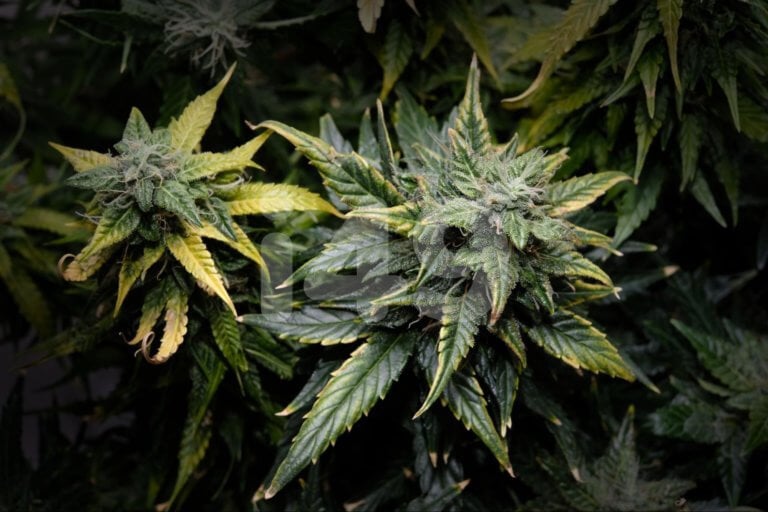Pests are among the most frequent and frustrating issues marijuana growers deal with. Invasive insects like thrips on cannabis are the bane of many cultivators.
Are you considering growing or already in the process? Learning about pest control is crucial. Join us and discover how to identify, cure, and prevent the pesky problem of thrips on weed plants.
Let’s go!
What are thrips, and what do they look like?
Thrips are tiny insects capable of causing enormous problems for cultivators. Much like cannabis aphids, they attack indoor and outdoor plants.
If your cannabis has thrips, it means your harvest could be in grave danger. The insects feed on the plant’s sap, drying it out, and carry harmful viruses that spread and cause damage.
Below, you can see an image of a thrip’s egg. Thrips eggs clustered on a leaf with adults and nymphs nearby. Thrips reproduce through egg-laying.

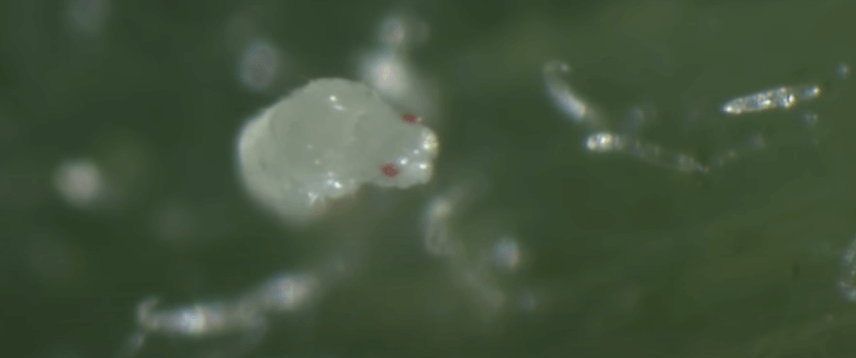
When thrips are young, they’re only visible through magnification. They appear as minuscule worm-like slivers that move slowly. The insects are usually translucent or pale in color in their early life stages.
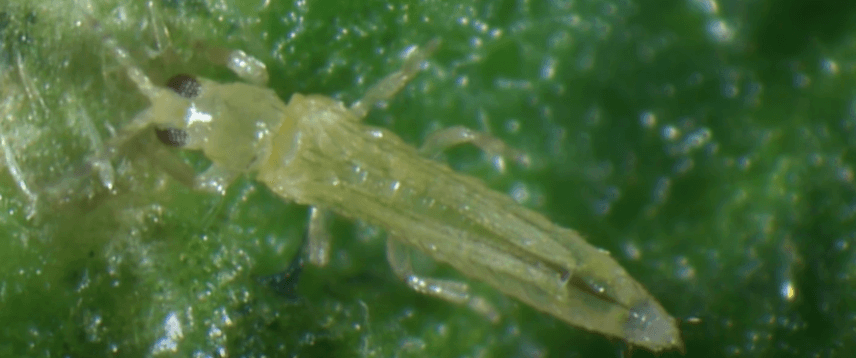
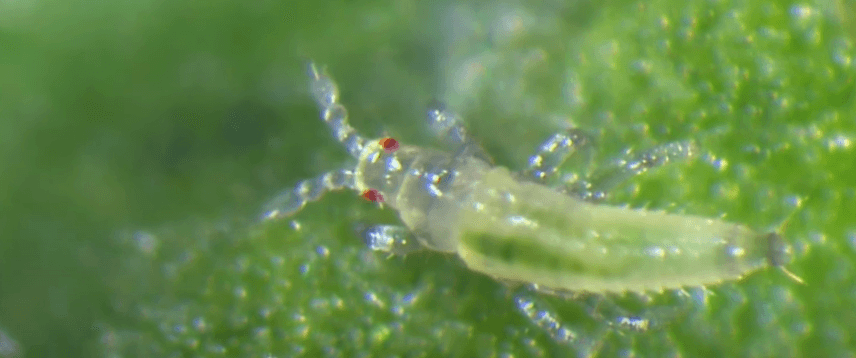
As fully grown adults, thrips on cannabis are still tiny but visible to the naked eye. They have wings and move quickly around the plant. As they mature, their color changes, ranging from yellow and green to dark brown or black.

Spotting thrips on weed plants is tricky. Even when fully mature, the insects don’t exceed a quarter of an inch. They’re often more prevalent on the underside of the leaves, so frequent and thorough inspections are necessary.
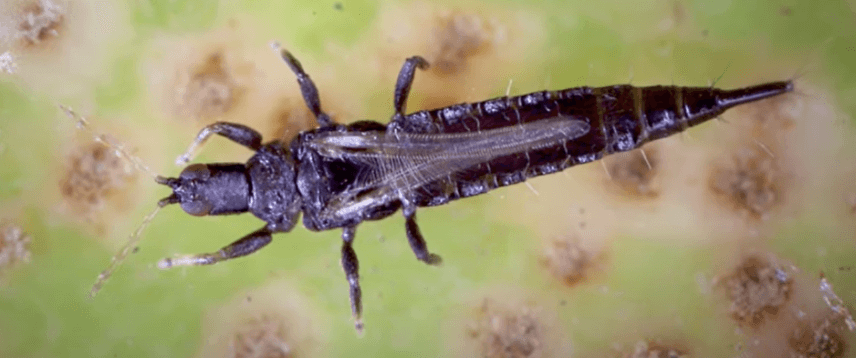
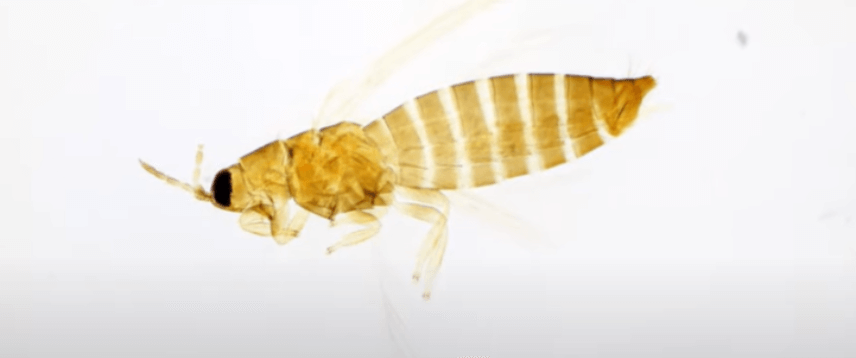
Their size makes detection difficult, but identifying the infestation is easier when you know the signs.
How to identify thrips on cannabis
Knowing how to identify thrips on cannabis is crucial. These creepy creatures can ruin a crop if you’re not keeping a close eye on it. Despite their size, there are ways to detect the insects’ presence.
Watch out for these signs:
- Trails: When thrips are young, they leave silver, snail-like trails as they move. Early detection is crucial, so always inspect your plants closely.
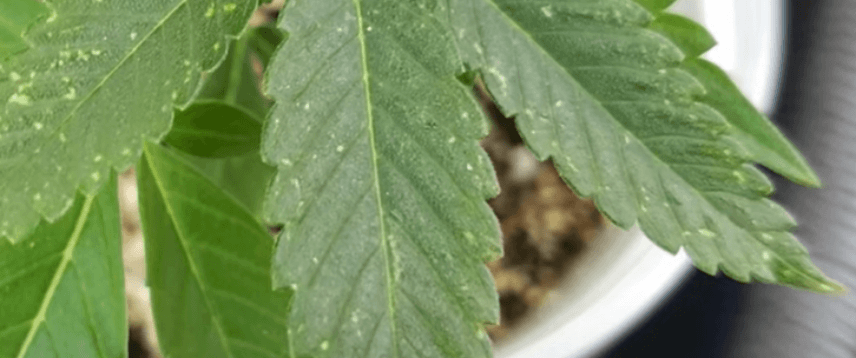
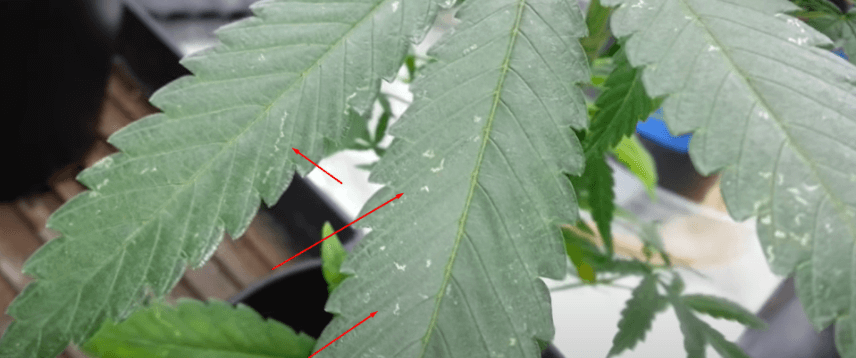
- Spots on leaves: As the insects develop, brown or shiny silver spots on the leaves become visible. These marks are indicators of the thrips feeding on the sap.
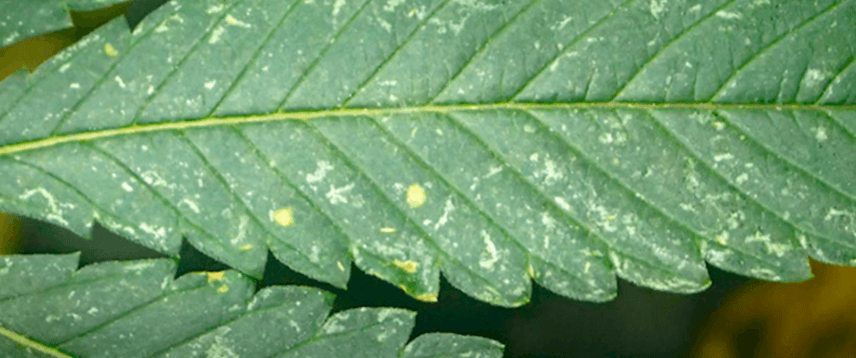
- Black spots on leaves. In rare cases, thrips can also leave a black resedue from their feces.

- Dry and weak plants: If the infestation is left to develop, the insects drain the plants of their liquids through constant feeding. At this point, curing your brittle crop can be a challenge and might be too late.
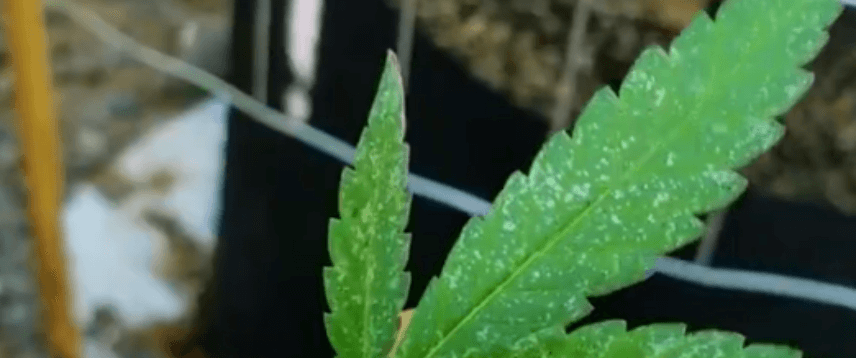
Knowing how to identify cannabis pests and bugs like thrips on weed leaves or whiteflies is a critical part of growing marijuana. Early detection is key to an easy fix, but eradicating the fully grown insects is still possible.
If you’ve found signs of thrips in your garden or grow room, don’t lose hope, all is not lost.
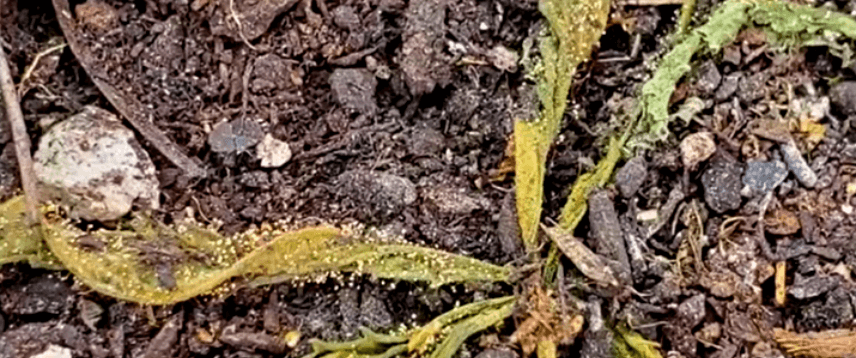
How to get rid of thrips on weed leaves for good
These destructive pests can ruin all your hard work on an otherwise perfect grow. If you discover your crop is under attack, don’t panic. Your efforts are not in vain.
Learn how to get rid of thrips on cannabis plants in three ways:
Insecticidal soap
Using insecticidal soap is effective for removing thrips.
Spray the plant thoroughly, covering it from top to bottom. It’s essential to apply the soap again two days later to ensure all the thrips die. The insecticide dissipates after a day, and it only takes one surviving male and female to reproduce an entire infestation.
Chemical products
Using chemicals is often necessary to eliminate thrips on marijuana plants. Among the best to use are spinosad products. They’re entirely organic and applied when watering your crop.
Spinosad products work by traveling up through the root system and poisoning the thrips. This method is particularly beneficial for outdoor growing as it doesn’t kill other innocent insects in your garden.
Neem oil
As a naturally occurring pesticide, neem oil is excellent for eradicating thrips on weed during the vegetative stage. It’s chemical-free and effective, but the catch is the strong smell.
Only use neem oil as a method for curing the plant before it enters the flowering stage. Applying it when buds are forming results in an unpleasant flavor and fragrance.
Rescuing cannabis with thrips can take a bit of work. Learning how to prevent them from attacking your plants is worth the effort and saves you from future problems.
How to prevent thrips on marijuana plants
Pests like spider mites or thrips often cause significant damage, and dealing with them can be a nightmare.
The best way to avoid thrips damage on cannabis is to learn how to stop them before they can attack your plants.
Here are some preventive measures we recommend:
- Keep the place clean: A spotless grow area is essential for avoiding pests. It’s also a general rule for cannabis cultivators to prevent contamination and other issues an untidy space invites.
- Sanitize your tools: Washing your hands and cleaning your trimming clippers is crucial. Sanitizing your tools frequently helps prevent thrips on cannabis leaves from becoming problematic.
- Use adhesive strips: Installing insect adhesive strips in your grow area is another employable strategy. This method causes the thrips to get stuck before they reach the plants.
- Thrip nets: Using specially designed nets to block vents indoors and as a cover outdoors works wonders. They don’t impact airflow and can stop small insects and birds from entering your grow area.
Thrips can damage weed crops extensively, and the issue is irreparable in extreme cases. Taking measures to prevent pests and diseases should be at the forefront of every grower’s mind. A little work to help avoid these problems makes cultivating cannabis much easier.
If you’re a novice who wants to experience the joy of growing with fewer complications, beginner seeds are ideal. These cultivars are bred to require minimal maintenance and are strongly resistant to pests, diseases, mold, and harsh conditions.
Cultivating cannabis should be an enjoyable experience, so stick to our advice and don’t let thrips spoil the fun.



